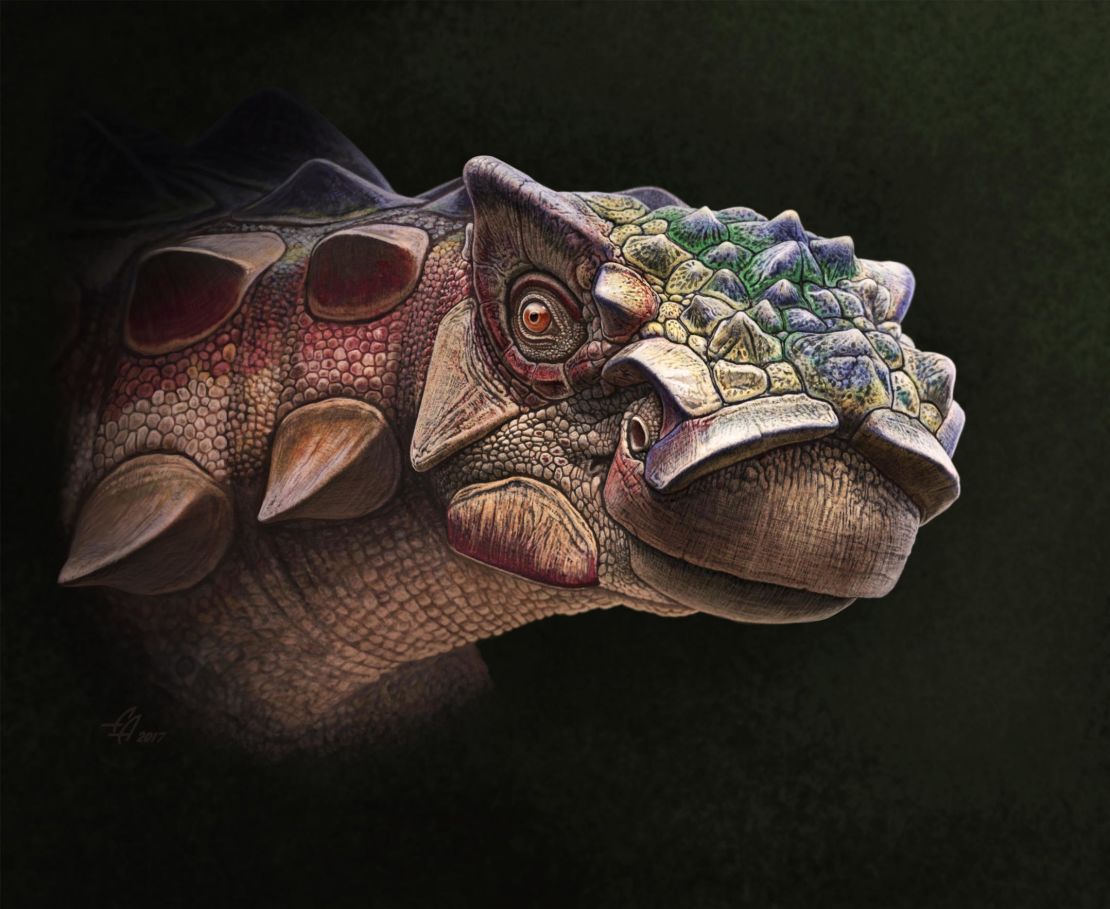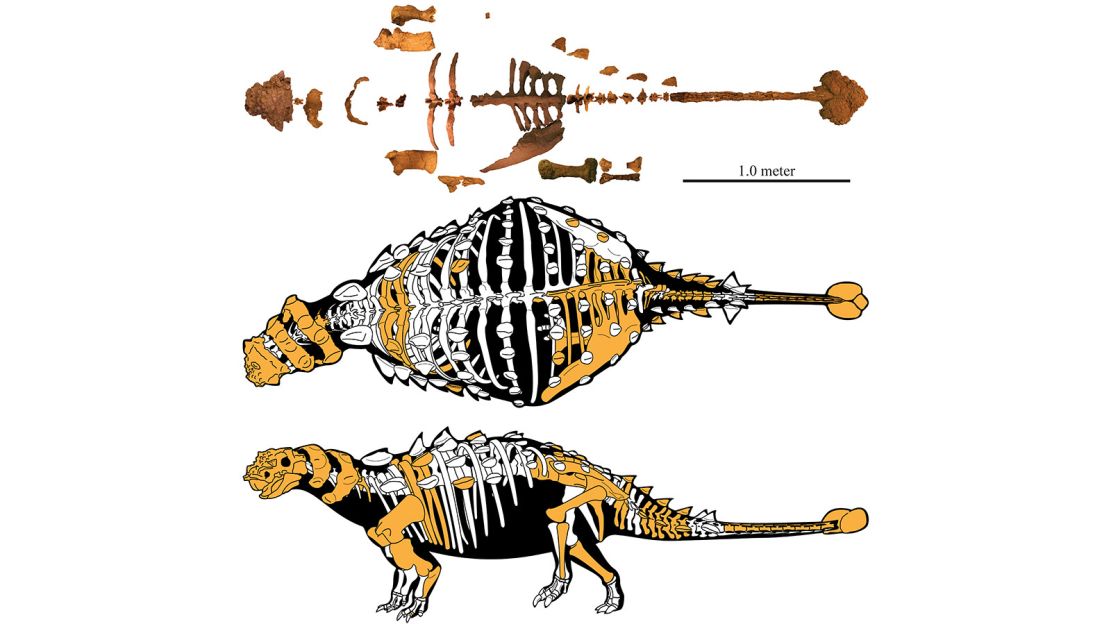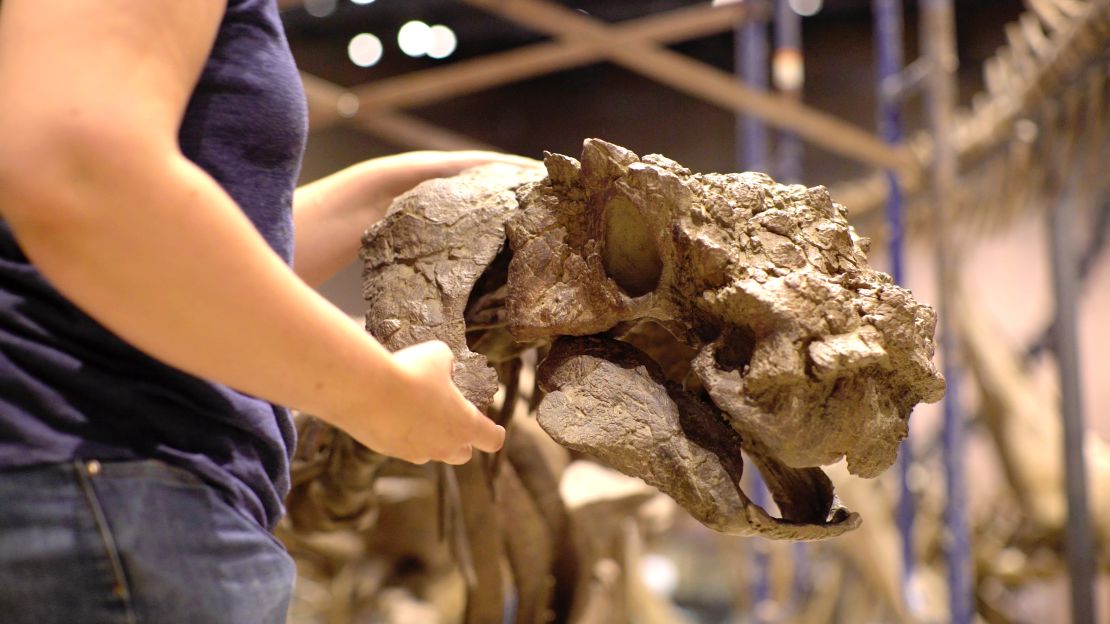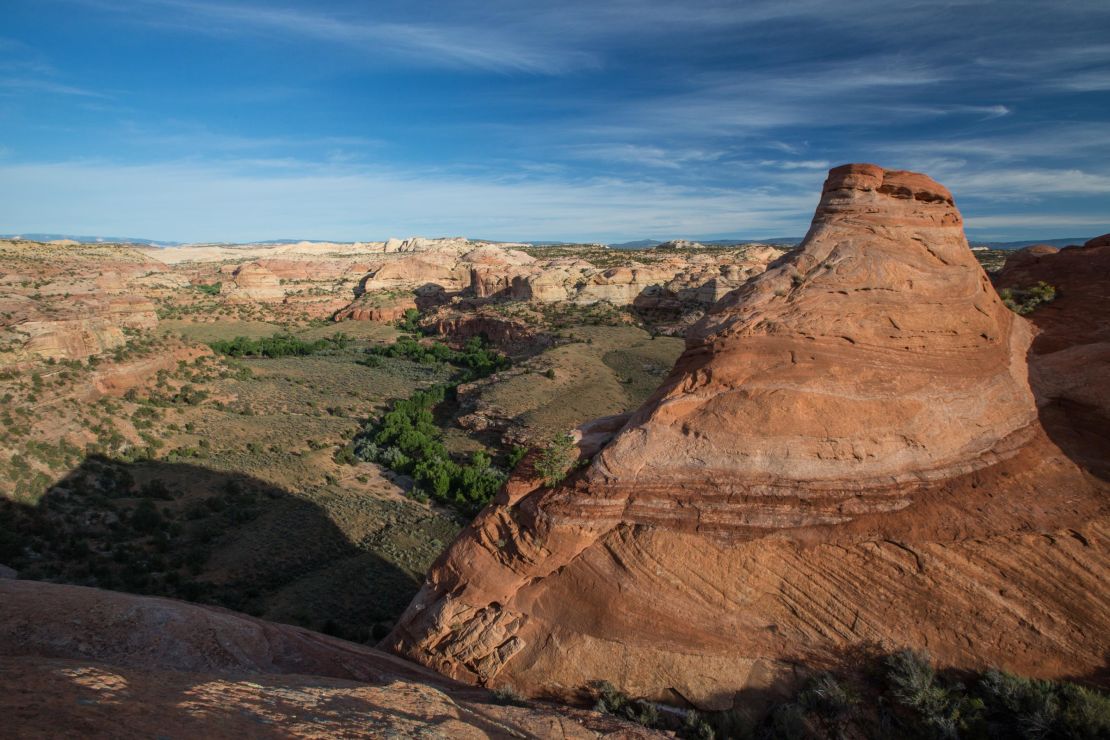Story highlights
The discovery of a new type of armored dinosaur has its roots in Asia
Researchers believe it emigrated to what is now southern Utah 76 million years ago
The fossil of a previously unknown 76 million-year-old armored dinosaur that once roamed the lost continent of Laramidia is finally going on display after being found in the scenic Grand Staircase-Escalante National Monument in southern Utah in 2008. The ankylosaurid fossil, known as Akainacephalus johnsoni, is now on exhibit in the National History Museum of Utah in Salt Lake City.
The genus name essentially means “spike head,” but the species name is in honor of museum volunteer Randy Johnson, a retired chemist who helped prepare the skull.
“I never thought that I would have the opportunity to actually work on fossils that could be important for paleontologists,” Johnson said in a statement. “Now that I’m a museum volunteer, I’m getting the opportunity to work on a large variety of fossils and consult with top paleontologists – it’s like a dream second career. I couldn’t believe it when they told me they are naming the ankylosaur after me, a once in a lifetime honor.”

Akainacephalus walked on four legs directly beneath its body and was considered medium-size, measuring between 13 and 16 feet long and 3½ feet tall. The characteristic bony armor covered it from head to tail, including bony plates for protection. Its skull was covered with spikes and horns.
The fossil includes a complete skull, most of the vertebral column, fore and hind limb elements, bony body armor neck rings and spiked armor plates and a complete tail club. It is the most complete skeleton of this type of armored dinosaur ever found in the southwestern United States.

It was found in the monument’s Kaiparowits Formation, where rocks and mud were deposited by rivers and streams.
The fossil was discovered in 2008 during a paleontological expedition, along with a duck-bill dinosaur, a new species of turtle and a relative of alligators. The bones took almost four years to prepare.

A study about the find was published in the journal PeerJ on Thursday in conjunction with the announcement of the exhibit.
Ankylosaurids were herbivores known for their intimidating bony tail clubs and body armor, and their fossils have been found in North America before. But this well-preserved fossil revealed a surprising detail.
The ankylosaurid fossils associated with North America had smooth bony armor on their skulls. This one had pronounced spiky, bony armor covering the skull and snout, closely related to Asian ankylosaurids that lived 125 million years ago.
“A reasonable hypothesis would be that ankylosaurids from Utah are related to those found elsewhere in western North America, so we were really surprised to discover that Akainacephalus was so closely related to species from Asia,” said Randall Irmis, co-author of the study and curator of paleontology at the Natural History Museum of Utah, said in a statement.
The fossil helped the researchers determine that at least two immigration events occurred during the Late Cretaceous period, resulting in two groups of ankylosaurid dinosaurs.
When sea levels reached some of the highest in the history of our planet, the Western Interior Seaway effectively split the North American continent in two. The western and eastern portions of the continent were isolated. To the west was Laramidia, and to the east was Appalachia. These would come together to form North America once again, resulting in the two essentially becoming lost continents.

Akainacephalus would have roamed the southern part of Laramidia, which once stretched from the Arctic Circle to the Gulf of Mexico.
But the sea level lowered briefly on several occasions, allowing dinosaurs and animals to go between Asia and western North America across the Beringian land bridge. This also accounts for the the Asian ankylosaurid dinosaurs moving into North America.
“It is always exciting to name a new fossil taxon, but it is equally exciting if that taxon also provides additional insights into the bigger picture of its life, such as its diet or aspects of its behavior, and the environment it lived in,” said Jelle Wiersma, lead study author and doctoral student in the department of geosciences at James Cook University in Australia, in a statement.

Almost every species of dinosaur discovered in the Grand Staircase-Escalante National Monument is new to science, including Akainacephalus. This part of Laramidia was incredibly diverse in plant and animal life between 75 million and 80 million years ago. Possible reasons for the area’s diversity include sea level, climate differences across latitude or barriers like mountains and rivers.
“It is extremely fascinating and important for the science of paleontology that we can read so much information from the fossil record, allowing us to better understand extinct organisms and the ecosystems they were a part of,” Wiersma said. “A major long-term goal of our work in southern Utah is to try and understand why the species in GSENM differ from relatives of the same geologic age found in other parts of Laramidia.”


































































































































































